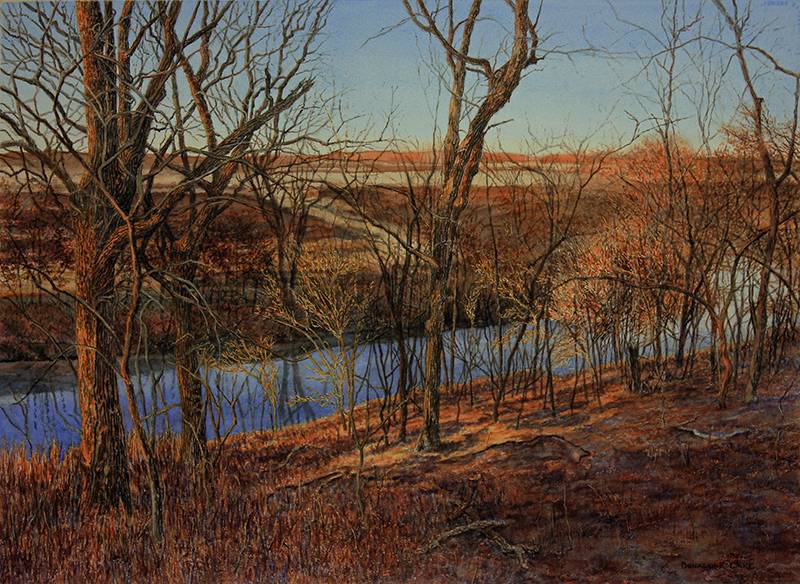Listening to Don Lake’s artist talk last night at Parkland College — given in support of his watercolor retrospective currently showing at the Giertz Gallery — I got a sense of what Lake must have been like as a teacher. Warm, funny, wise, capable of technical wizardry, yet able to explain it practically, clearly, patiently and humbly. Lake is that rare breed who shines as brightly at the podium as he does at the easel. He proves that the best teachers are those who do, and do so exquisitely, joyfully, and prolifically.
As I scribbled away in my notebook, trying to capture wisdom I could share with you here, the gems just kept on coming. And while there is no substitute for the experience of a live lecture, I share my takeaways hoping that they will inspire you to see the show, or, if you have seen it, to consider it again, or better yet, see it again, now with the benefit of this insider info.
This chronological tour of Lake’s work, his evolving techniques, his movement into and through significant subjects, was in many ways a biographical retrospective, a map of his own lived landscape.
His early study of firetrucks set the tone for his process, technique, and subject matter. The combination of translucent watercolors and subjects with reflective surfaces proved to to be a signficant one. He observed that “bright things reflect and we can’t see them. Dark things reflect and we can see some part of them.” Lake would take his own photograpths of the trucks and use them as reference. Breaking the overall composition into small spaces that were able to be completed in a single work session led to a sense of abstraction from the original, whole image. Working only with shapes, shadows, and reflections he could ask himself, “What’s going to happen? What could happen?” As a result, he evolved into a style and technique quite different from the one he had developed as an art student.
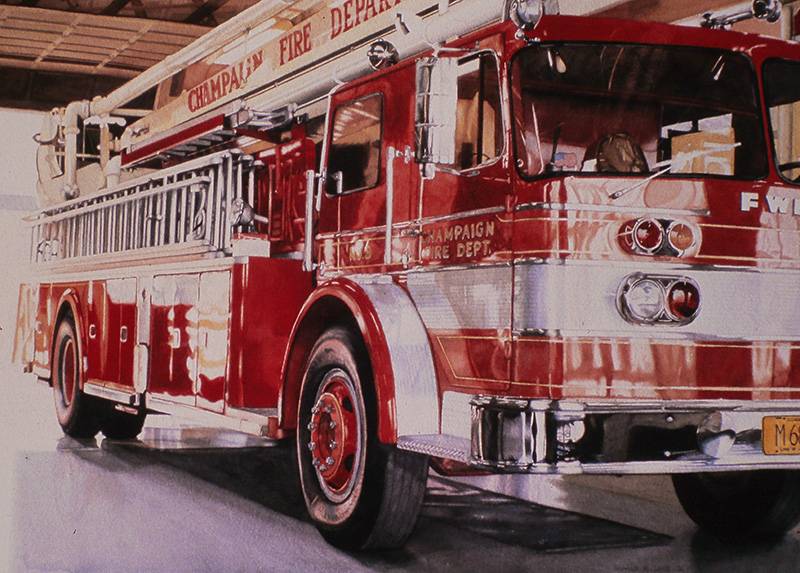
Sentinel II, © Don Lake
Champaign-Urbana was the first college town Lake and his wife ever lived in. He remembers being somewhat shocked by the prevalance of “Illini” this and “Illini” that. But it was the omnipresent orange and blue that made a signficant and long-lasting impact on his color-palette choices. This becomes clear in his Warbirds paintings, inspired by visits to Willard Airport, which employ complementary color schemes.
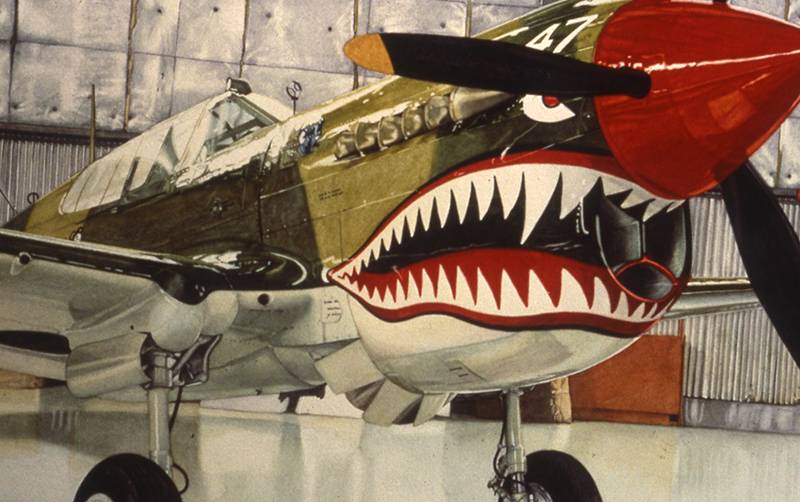
Warbirds Series 3, © Don Lake
Soon art imitated life. Lake and his wife “bought a swimming pool with a house on the front” and his focus shifted to poolscapes featuring bodies in motion. Theme and technique played out to their natural end, Lake came upon a new source of inspiration: dry pigment powder. This technique clearly fascinated both the artist and the audience, as it came up several times during the Q & A session. After painting on a deep layer of pigment, Lake used his electric eraser, his frequent secret weapon, to draw the actual image out. Lake described both the process and resulting work as “gritty and dirty, physical and direct.” Reflecting that “that’s why I liked it as an alternative to the slower processes [of layered transparent watercolor].”
Lake’s well-known “Industry” period rightfully filled a significant portion of the evening’s discussion. The son of an oil refinery worker, industrial locales remain both familliar and fascinating to the artist. These places provided the perfect setting for exploration of light and shadow and, in particular, penumbra (reflecting light). Many of the works from this period carry titles that hint at the hidden wonder and majesty the artist sees within them (e.g.”Industry: Labyrinth,” “Industry: Backstage”). These are spaces filled with power, purpose, danger, and, in Lake’s rendering, hidden realms of architectural beauty. His explorations of windows, infrastructure, and equipment often play with the notion of decay and aging. He finds an imperfect perfection or Wabi-Sabi in the scabby layers of paint. The almost magical nature of the dusty air —rendered with his trusty electric eraser—has become a trademark style.
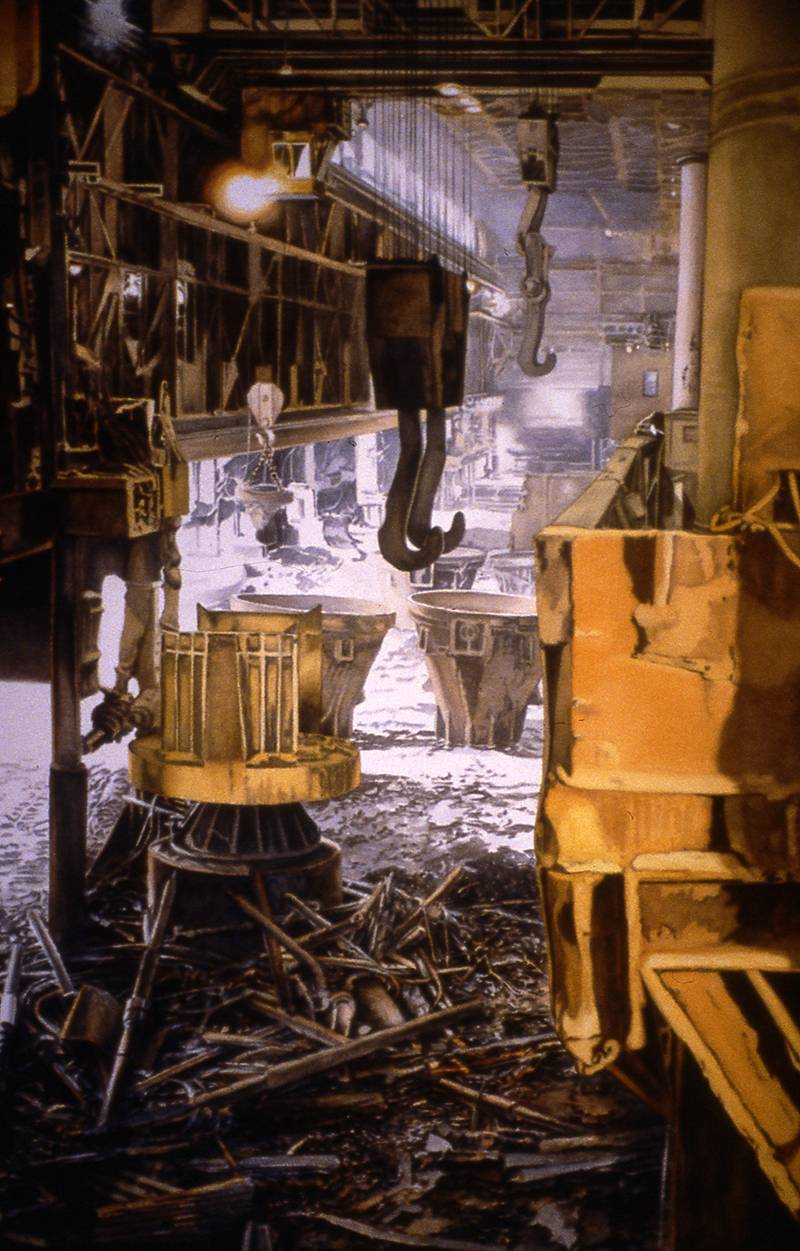 Industry: Backstage © Don Lake
Industry: Backstage © Don Lake
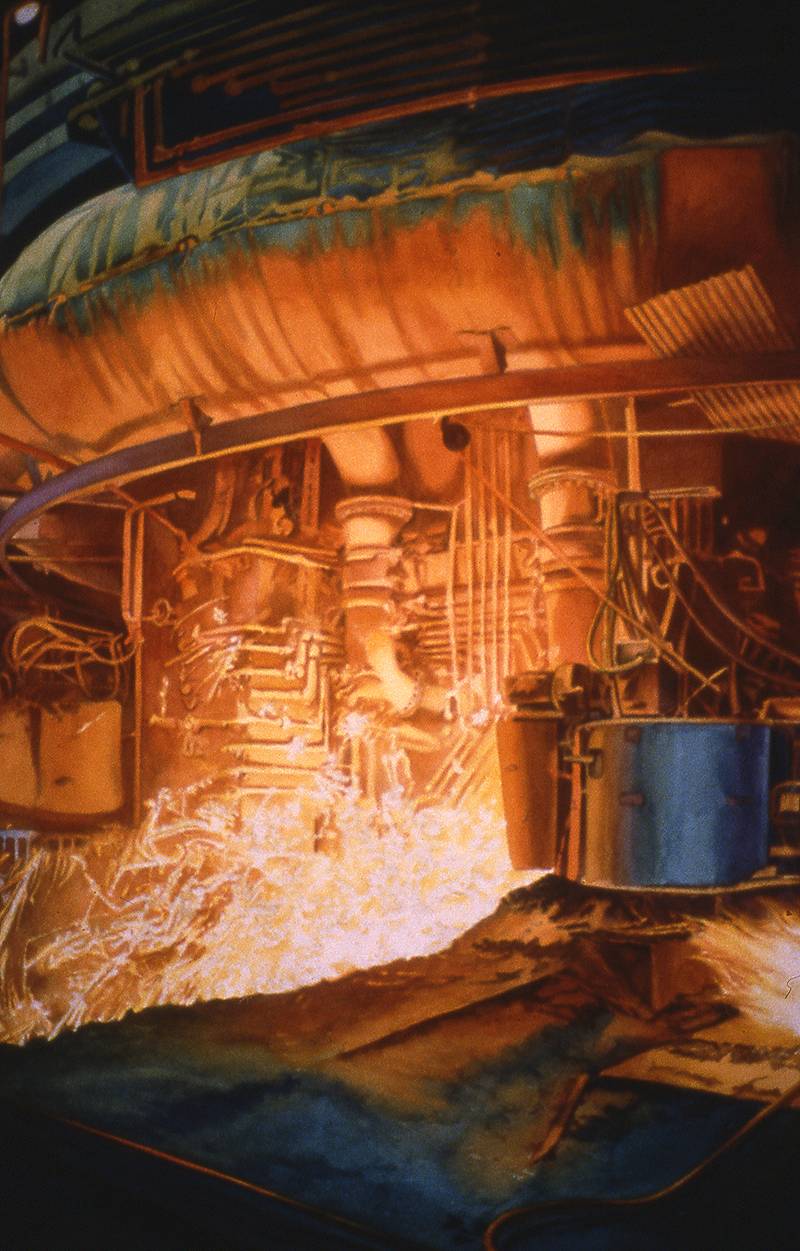
Industry: Blast Furnace © Don Lake
Industrial sites also served as the laboratory for Lake’s layering techniques. Beginning with a graphite drawing that often remains hidden underneath the layers of watercolor, Lake moves on to his signature complementary color palette (blue, orange, purple), often preparing with a layer of “dirty water” to add depth. One of the examples Lake showed appears below.
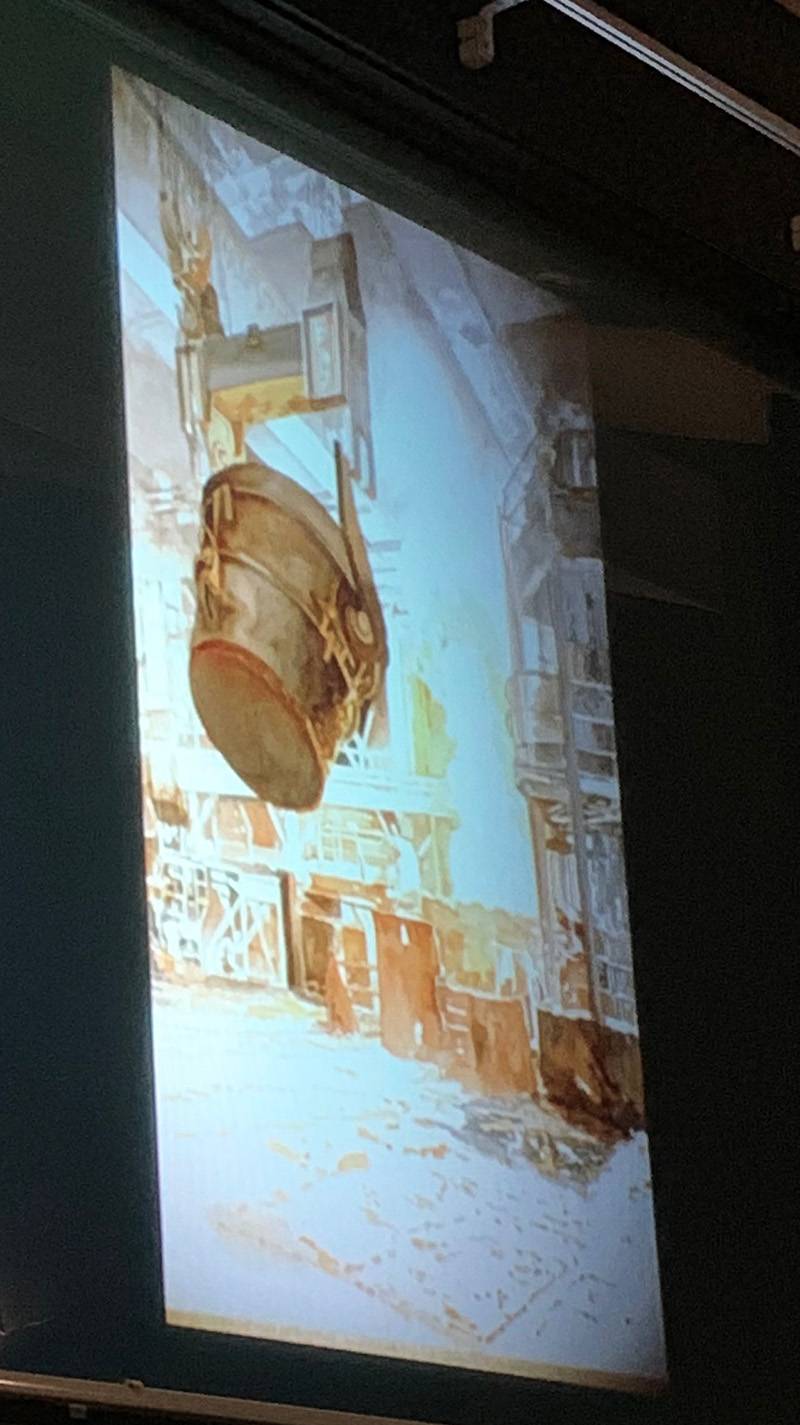

Fun fact: The practical side of the artist always took on the most complex elements first to “get them out of the way.”
Lake was perhaps at most poignant and philosophical when speaking of the darkest elements of these paintings.
“If there’s dark in a painting, you have to paint what’s in there first, what was there before it went dark,” he explained. Then you add the layers of shadow “that you can still see through.” Like many in the audience, I was captivated by this notion. Lake, who works from a series of photographs he himself takes, noted that in photographs these spaces are often rendered as “black holes.” But in the watercolor world, there is always something there. And, as Lake explained, sometimes that “something” came from memory, and sometimes it came from his imagination.
The majority of works in this series intentionally omit human figures, as Lake prefers to allow the viewer to see themselves entering the space. However, in a piece done for Veteran’s Hospital, he made an exception. Here, where residents craved the familiar, Lake included workers similar to those the residents may have known, or have even been at one time in their lives.
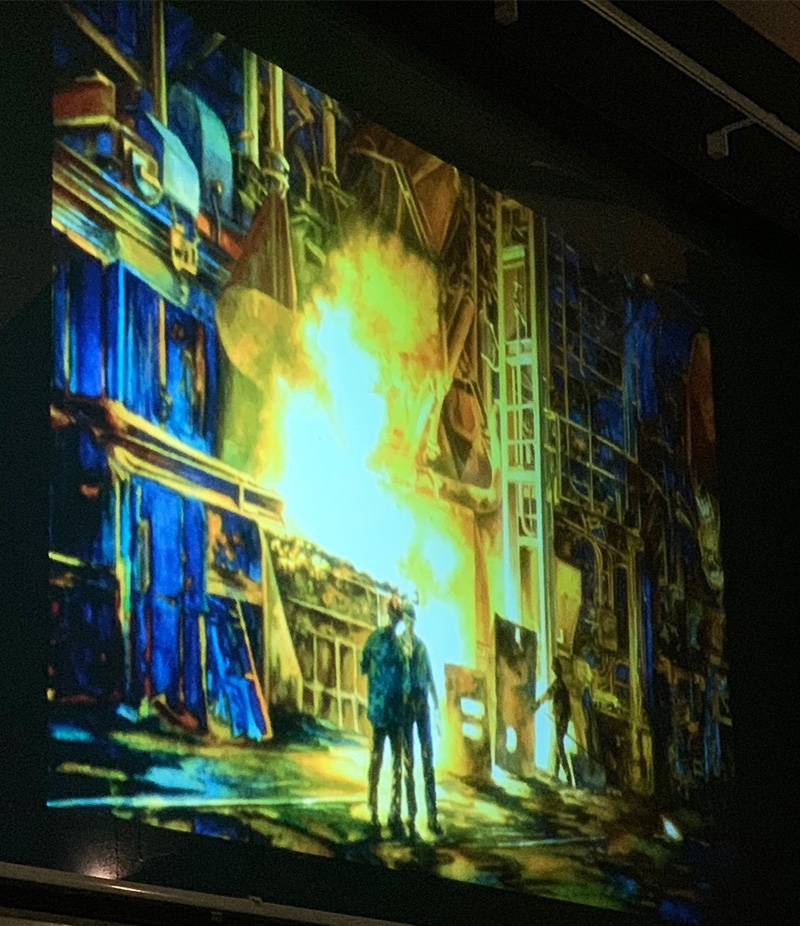
Wtih art imitating life once again, Lake’s wanderlust took him and his wife to many new and vibrant locales, many of which inspired the landscapes included in this retrospective. Traveling throughout the US, Costa Rica, and the UK, Lake employed several new techniques, including the “three-hour painting,” (not shown here) where the limitation of natural light requires new strategies and offers a sense of liberation from his longer processes. He calls them “high-risk and high-reward,” since, for a painter, the whole world can change in three hours.
Ultimately, the artist settled into a new style for his landscapes—crisp, linear, and highly evocative—which rely on fine brushwork rather than the broad strokes used in his previous work.
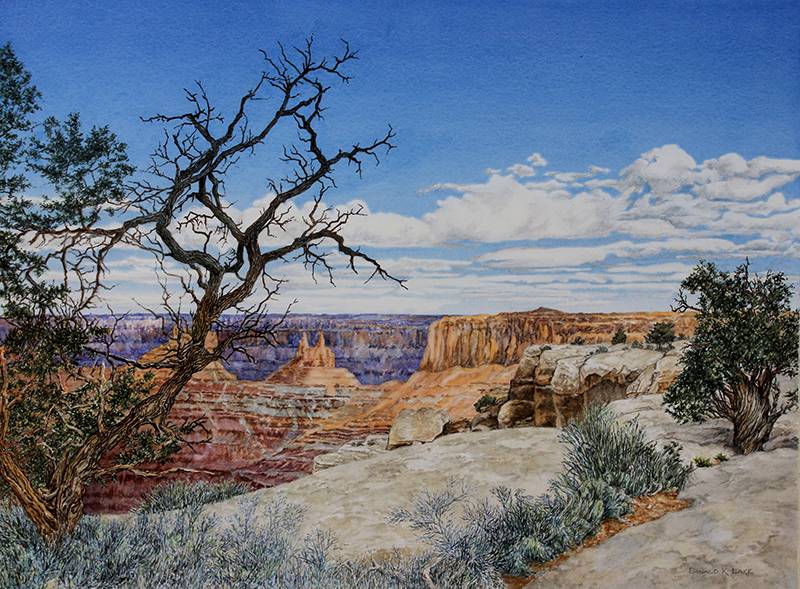
Big Horn Canyon © Don Lake
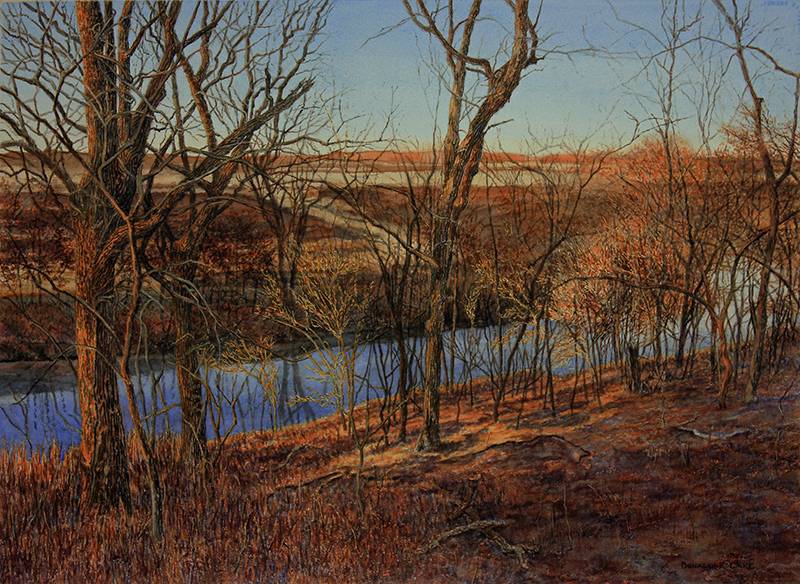
Late afternoon, winter/fall river © Don Lake
Whether discussing what to fit into those seemingly dark spaces mentioned earlier, or exploring new subjects or techniques, Lake says “I’ll know it when I see it. It reveals itself to me. It doesn’t always come to you full blown, sometimes you have to tease [the solutions] out.”
In some sense, Lake owes his extensive body of work—and its diverse range of subjects and techniques—to his innate curiosity, his love of travel, his openness to new ideas, and his willingness to change his mind. Recently, he has “changed his tune about Christmas card prettiness” which he once “had an attitude about.” He has also warmed up to the use of frisket (masking material) as a solution for achieving thin slivers of white in winter landscapes.
I’ll end with some of my personal favorites from the Airstream series. A long-time fan of their Art Deco lines, these pieces glisten with reflective light in a way is classic Don Lake. When filling in the reflective spaces, he is a bit constrained by the details of the Airstreams themselves, yet finding room for inventor “makes him feel more involved.” These paintings stand as both a metphor for industry and travel. They are personal, yet without a human figure, we become the actors in the scene. We begin to travel and explore.
And speaking of travel, isn’t it time you headed over to the Giertz Gallery to see these incredible transparent watercolors yourself?
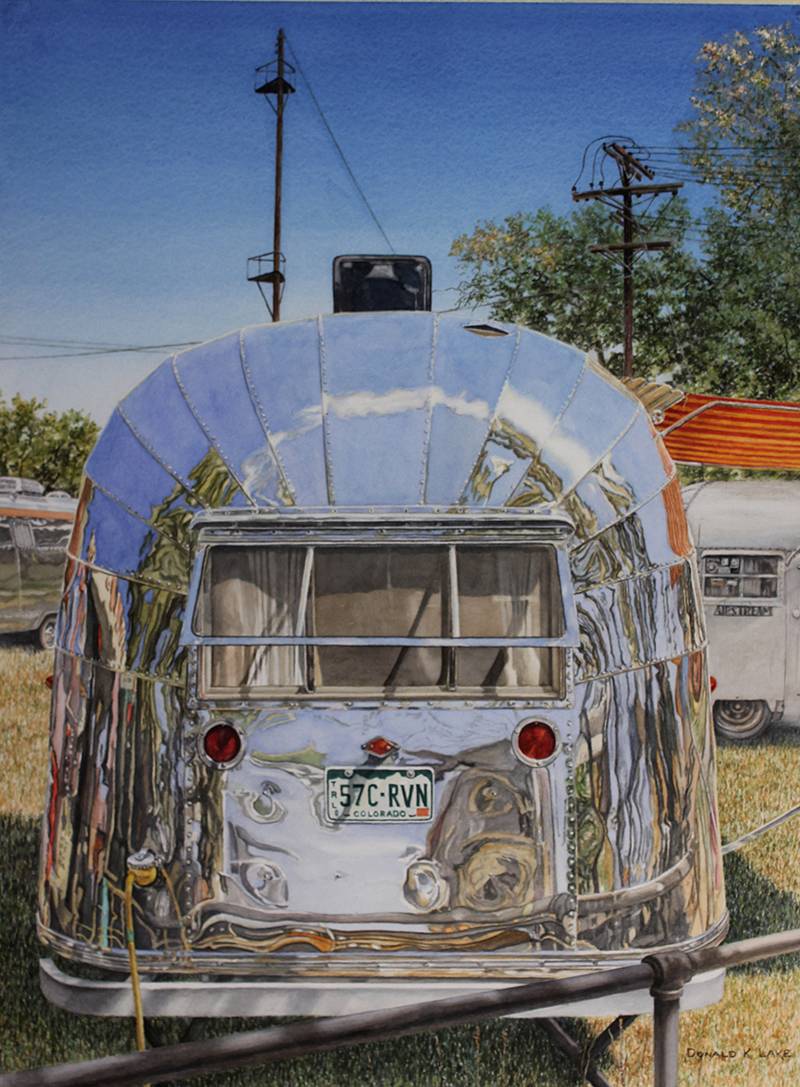
Classical aluminum © Don Lake
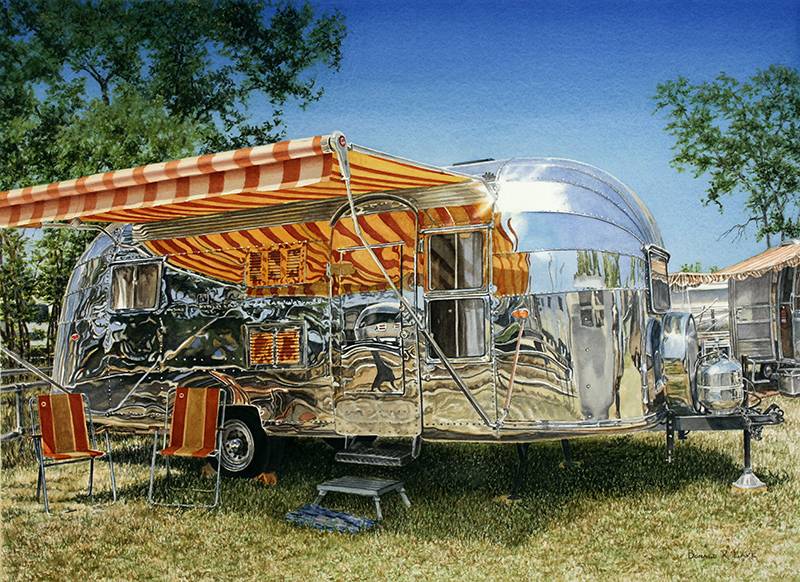
’57 Airstream Caravaner © Don Lake
Don Lake : A Watercolor Retrospective
Giertz Gallery at Parkland College
June 17th through August 8th
2400 W Bradley Ave
Champaign
Gallery walkthrough by Gisele Atterberry: Tuesday, July 23rd at noon
M-Th 10 a.m. to 7 p.m.
Learn more about Don Lake on his website
Special thanks to the Urbana Arts Council for supporting this exhibition.
All photos from the artist except the three shots from the lecture projection, which are by Debra Domal.








